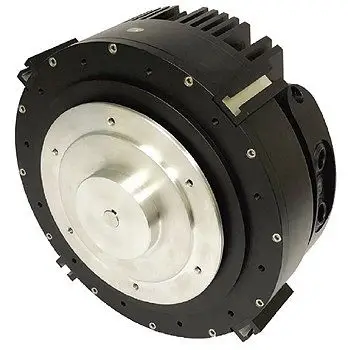IE5 motors with PCB stators slash costs and weights

A US motor developer claims to have designed a “transformational” high-efficiency motor that will cost up to 25% less to produce and will weigh up to 60% less than comparable motors. Texas-based Infinitum Electric has just raised $1.8m of Series A financing, bringing its total funding since its founding in 2016 to $2.7m. It plans to use the funds to launch an integrated HVAC-specific version of the motor and to boost r&d for applications in the electric vehicle, and oil and gas, markets.
Infinitum Electric says its mission is to disrupt the way electric machines consume and create electricity. It believes that its patented PCB (printed circuit board) stator technology provides “unrivalled” performance and cost advantages over traditional motors and will change the electric motor landscape.
Instead of the laminated stator cores of conventional motors, Infinitum is using PCB stators with etched copper conductors, which can be customised and optimised for specific applications. This design eliminates the need for conventional windings and iron laminations, and is said to reduce losses, decrease cogging and torque ripple, and to raise efficiencies above the IE5 level. The layout of the insulated copper conductors can be optimised to control losses and to provide high power densities.
The customisable design of the motors is said to allow greater optimisation than other motors, resulting in cost savings of up to 25% lower, weight savings of up to 60%, as well as “superior durability and enhanced IoT connectivity”. At the component level, the weight savings can be as high as 90%.
The way that the conductors are formed provides the entire coil with an equal coefficient of thermal expansion, while the continuous coil design limits the number of internal connections and increases life expectancies. As long there is no mechanical interference, the stator and insulation are said to be “almost indestructible”, Infinitum says.
Another potential attraction of the PCB-based design is that IoT circuitry can be embedded onto the stator surface to obtain accurate operating data direct from the source, rather than relying on less accurate aftermarket monitoring systems.
The use of inline inductors is said to make the Infinitum motors compatible with almost any off-the-shelf variable-speed drive (VSD). The company has also designed integrated motor-and-drive packages that eliminate the need for external VSDs or additional filters, and will operate on a plug-and-play basis without needing any programming. Their high-frequency operation optimises switching losses and provides efficient power conversion.
Compared to a 5hp (3.7kW) IE3 Nema induction motor, which would typically weigh around 55kg and be about 40cm long, a 5hp Infinitum Electric motor weighs around 20kg, is 12.7cm long and offers an efficiency above IE5. An IE4 axial flux motor with the same power rating would have a similar length (12.7cm) and would weigh 27.2kg, with a diameter of almost 50cm, compared to 25.4cm for a Nema motor or 32cm for the Infinitum machine.

A 5hp version of Infinitum Electric’s motor with an integrated drive for HVAC applications
Photo: Business Wire
The PCB stator technology and control systems are protected by five patents with 11 more pending. The motors’ modular design allows the machines to match the form factor of nearly all existing motors.
“Our patented circuit board stator is what sets us apart and positions us well for success, not just in the HVAC space, but for a variety of applications,” says Infinitum’s CEO, Ben Schuler. “Our motor technology provides superior advantages for companies looking for improved performance.
“The electric motor market is a $150bn industry annually, over a century old, and many markets within the industry are trying to consume and create power more efficiently,” he adds. “Some markets, like electric vehicles, are in the process of electrifying completely.”
Infinitum is working with global motor and generator manufacturers, and industrial OEMs, to customise its technology for specific applications and market segments. It is focusing initially on air-moving applications in the HVAC industry, and reports that partnerships with some of the industry’s biggest players are already underway.
Infinitum’s recent $1.8m Series A round of financing has been led by Cottonwood Technology Fund (CTF). “Infinitum Electric has developed a clearly disruptive approach to an industry and technology that has largely remained unchanged for decades,” says CTF’s managing director, Dave Blivin. “It’s exciting to join the effort and support their success in blazing a new trail in the electric motor industry. The timing could not be better given the conversion to electric motors across many industries, in particular transportation and hydraulics. More power, less weight and smaller form factor is a great value proposition to be selling in the current market.”

A 1hp Nema induction motor (left) compared to a similarly rated Infinitum Electric motor (right)